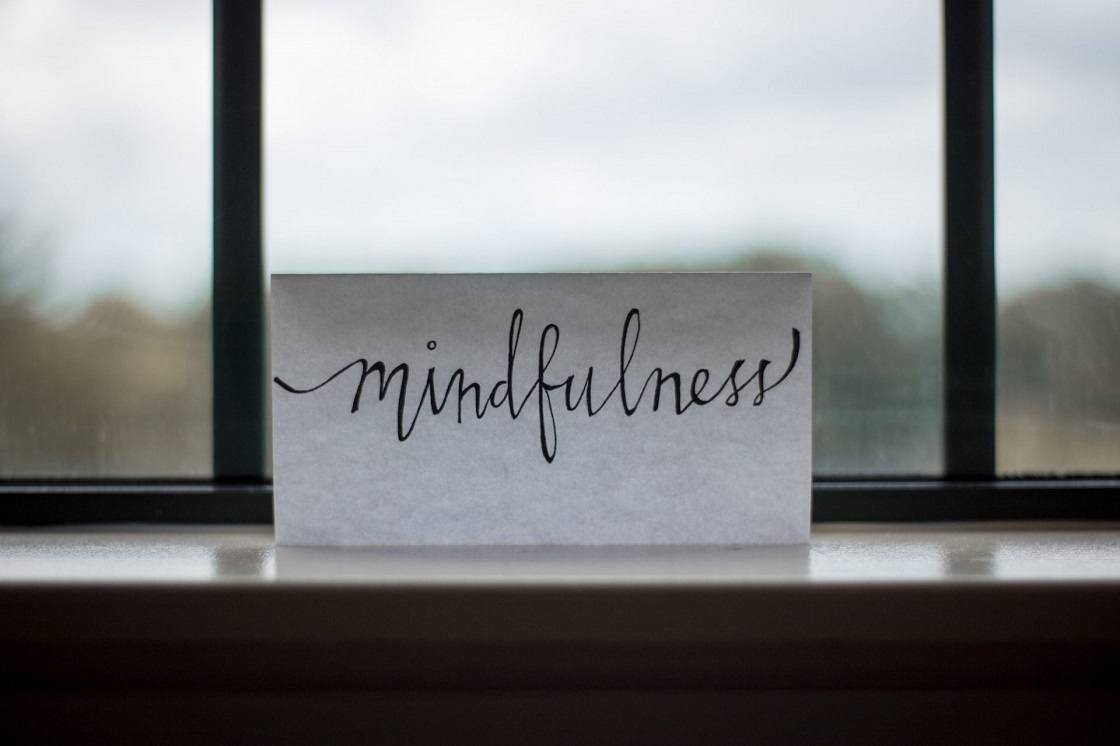Mindfulness this and meditation that; it seems everyone is raving about the benefits of practicing mindfulness in their work and personal lives. A simple Google search of the words “Mindfulness” yields about 653,000,000 results, some of which citing influencers and the role mindfulness has played in their lives or success. Hundreds of CEOs, athletes and stars now mediate as a daily practice including Marc Benioff, Tom Brady and Katy Perry.
Even with all the bustle around mindfulness, it is not just a fad. It’s a research-backed method for managing stress and building resilience that’s changed millions of lives. More than two million Americans report practicing mindfulness, many citing they felt suspicious when they began.
Mindfulness is awareness and attention training that helps you create daily habits to calm and focus your mind and relax your central nervous system. It’s brain training to improve your focus, mental and emotional wellbeing, and enhance every aspect of performance. We’re training our brains all the time – that’s where mental habits come from.
An expansive field of brain research called “neuroplasticity” dates back to the early 1900s. Simply put, it’s the brain’s ability to change based on experience. Your brain is a muscle. You get better, stronger, and faster at the things you practice most because you form and strengthen neural pathways. You actually change your gray matter.
The “CliffsNotes” History:
Mindfulness, as we know it today, is a compilation of many years of research and innovation and cannot be attributed to a single founder. The following is what’s inspired over 4,500 peer-reviewed research studies on the health and performance benefits of mindfulness training:
- 1906: Ramón y Cajal, a Spanish neuroanatomist, wrote, “Any man (or woman, ahem) could if he were so inclined, be the sculptor of his own brain.” He spent years making painstaking drawings of brain anatomy, mapping neural pathways. He was one of the first researchers to postulate that we change the makeup and function of our brains based on how we use them.
- 1949: Donald Hebb, a Canadian psychologist, sought to understand how the function of neurons contributed to psychological processes such as learning new processes and retaining information. His work confirmed that “neurons that fire together, wire together.” It’s now famously known as the Hebbian Theory.
- Um, so what’s the Hebbian Theory again? The Hebbian Theory is a neuroscientific theory claiming that an increase in synaptic efficacy arises from a presynaptic cell’s repeated and persistent stimulation of a postsynaptic cell. In more common terms the Hebbian Theory means when someone learns something new, the neurons within the brain begin to adapt to the processes that are required.
- 1979: Jon Kabat-Zinn founded the Stress Reduction Clinic at the University of Massachusetts Medical School. Founding an eight-week course called Mindfulness-Based Stress Reduction (MBSR), he was one of the first researchers to place mindfulness training into a scientific context. His program is now used by medical centers, hospitals, and health maintenance organizations.
- 1991: Philip Barnard and John Teasdale research Mindfulness-based cognitive therapy (MBCT). MBCT is an approach to psychotherapy that uses cognitive behavioral therapy methods in collaboration with mindfulness.
- 1993: Brain training was introduced into popular culture with Bill Moyers’ influential documentary and five-part PBS series, Healing, and the Mind, igniting a new field of study. Since then, over 40 million viewers have seen the series.
Since the early 1980s, countless studies have confirmed that our brains change, adapt, and mold based on how we use them – like plastic. Research confirms intentionally changing our brains takes time and a specific approach.
The field of neuroplasticity research has become so advanced that the biggest brains in the world come together to talk “plasticity” at the annual Brain Futures conference. One of RethinkCare’s Master Trainers, Dr. Rick Hanson, does an excellent job of explaining the latest research in his book, Hardwiring Happiness.
Neurons that fire together wire together. Mental states become neural traits. Day after day, your mind is building your brain. This is what scientists call experience-dependent neuroplasticity.
Dr. Rick Hanson Share this
Practice Really Does Make Perfect
Ever heard people describing themselves as a “numbers person” or “good with people”? Beyond your inherent ability lies thousands of hours of training for your brain to be good at specific skills. To the point at which you can do amazing things without even thinking about it. You actually become it. Practice isn’t just a theory.
For example, after thousands of hours of training, the NFL Patriot’s quarterback, Tom Brady, throws a 50-yard touchdown. Steph Curry drains three-pointers. Misty Copeland lands beautiful quadruple pirouette. Itzhak Perlman plays a mean violin. They’ve practiced to the point at which the brain just takes over. The neural pathways have been created to process information seamlessly to allow them to perform without even thinking about it, letting their brains turn on their “autopilot.”
That’s amazing if you’re practicing rewarding and valuable skills —and we can all get better at what we choose to focus on. It’s the focusing part that can be difficult.
We’re Practicing the Wrong Things
The issue is that most of us are training the brain and getting tons of practice doing the wrong things. We practice worry, regret, anxiety, and conspiracy theories. We practice distracting ourselves with social media and the same old news feeds that we read five times a day. We train ourselves to fill every waking minute with activity. We’re addicted to busyness and toxic Twitter streams; the greatest hits of our friends’ pretend lives on social media, and we ruminate on negative things that happened forever ago. We feed worries that may never happen. More of us train ourselves to be experts at insomnia, lying in bed until we exhaust ourselves into poor sleep. Our brains are strengthening neural pathways to make us better at the things we practice most, and sadly we are practicing things that make us unhappy, unfocused, and anxious.
When it comes to training ourselves to be distracted, we’ve gotten to the point at which a Microsoft study estimates that human beings now have the attention span of 8 to 12 seconds. That’s about the same that a frickin’ goldfish has. In case you drifted off, I said a frickin’ goldfish.
When it comes to training ourselves to be anxious, it takes the average working adult half an hour to get to sleep. For most people, that time is spent analyzing their day and overthinking the next day’s challenges. Our brains are becoming accustomed to these paths, and “untraining” our brains will only occur if we intentionally undo the damage over time.
When it comes to training ourselves to be unfocused, our brains have convinced us we should be maximizing every second of every day, leaving us feeling scatterbrained and negatively affecting our long term memory.
Mindfulness training has a rich history in helping people to overcome the natural tendencies of the brain like distractions, negative ruminations, regret, and anxiety. The good news is, now that you know, you can do something about it. Are you willing to invest five minutes a day to reduce stress, while improving your ability to focus… and in the process, the quality and duration of your life?
Breaking into the practice of mindfulness may seem intimidating. Beginners might be concerned about how to fit practice into their schedule, or what exactly practicing looks like. Here are some tips for mindfulness beginners:
- Expect incremental changes. Change takes time. Like any other tool, mindfulness isn’t magic, it’ll take some time and commitment before practitioners see meaningful results. Similar to a diet, this doesn’t mean huge changes aren’t possible, it just means these changes occur over time.
- Be all in. If you go into learning anything new with an “on the fence” attitude you expect to see little to no results. The same goes for learning to practice mindfulness.
- Set aside a time each day to meditate. Learning takes consistent practice. Practicing once a week will not produce results.
- Share your experience with others. Whether you’ve just started learning or a seasoned practitioner, sharing your journey with mindfulness is helpful to others and yourself.
- Trust in the science. Understand that mindfulness is not magic foofoo; it’s a research-backed tool for managing stress and building resilience.
Give yourself this gift. Just five minutes a day can change your entire life. Find out more about mindfulness in the RethinkCare resource center!





